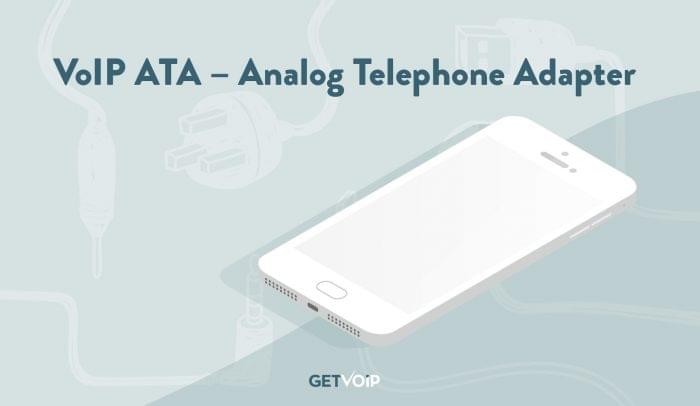ATAs, or VoIP Boxes, allow standard phones to make calls over the internet by using a device to connect the phone to your VoIP provider. In doing this, users’ traditional phones will be given access to many of the features VoIP such as call waiting and caller ID. The ATA has a processor inside, which encodes the user’s voice and enables it to be sent along the Internet. Additionally, ATAs typically feature one Ethernet port— also called the WAN (wide area network) port—and one telephone jack. The Ethernet port connects to a modem or router. In some instances there will be another Ethernet port to connect your computer for wired connectivity; however, if your computer has WiFi built in you will not need both. Also, some devices may have more than one telephone jack—each for its own, separate number.
To ensure the best sound quality, users should set the ATA between the modem and the router. If users choose to option against this, they can also use a Quality of Service (QoS) modem, as it gives priority to VoIP traffic.
While there are various different types of ATAs, all serve the same functionality: creating a physical connection between a phone and a computer or network device; however the mode of connection may be different. Some ATA’s use analog-to-digital conversion, which connects directly to a VoIP server, while others use different software for either (or both) these tasks. Aside from these variances, providers offer different boxes as well- i.e. locked and unlocked.Some providers may lease you an ATA during your contract, while others have proprietary boxes, such as the Vonage Box and the Ooma Telo.
Type and preference aside, some ATA boxes have additional features. The Ooma Telo, for example, can wirelessly pair with Ooma devices. Additionally, others are T.38 compliant, meaning they can send and receive faxes. Also, Analog Telephone Adapters for business VoIP, can encode various traditional phones.
ATAs offer both business and residential subscribers a simple transition from traditional service to VoIP. Aside from appealing to new users, ATAs can allow existing user to retain their traditional line for emergency purposes (power outages, natural disasters), or whatever other reason users may have.



